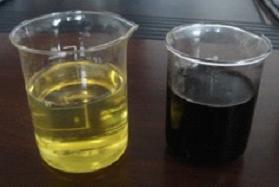| Sulfur | Sulfur has insectici... |
| Caustic so | Caustic soda solutio... |
| Caustic so | Caustic soda flake i |
| Soda ash | Soda ash used in foo... |
| Aluminum o | Aluminum oxide white |
| Loctite | Loctite a revolution... |
+86-351-4080661
Product name: Coal tar
CAS No.: 65996-93-2
Definition: coal tar is one of the products in the crude gas generated by coal pyrolysis in coking industry. The output of coal tar occupies 3%~4% of charging coal and under normal temperature and normal pressure, it appears black viscous liquid.
Physicochemical properties
Appearance and properties: black viscous liquid with special odor.
Relative density (water=1): 1.02~1.23
Open flash point (℃): about 200℃
Solubility: slightly soluble in water, soluble in benzene, ethanol, ether, chloroform, acetone and many other organic solvents.
(1)Naphthalene: it was used to extract phthalic anhydride for producing resin, engineering plastics, dyes, coating and pharmaceuticals, etc.
(2)Phenol: it is used to produce synthetic fibers, engineering fibers, pesticides, pharmaceuticals, fuel intermediates, explosives, etc.
(3)Anthracene: it is used to produce anthraquinone dye, synthetic rubbing agent and coating.
(4)Phenanthrene: it is the isomer of anthrancene, and its content is just after naphthalene. It has many usages. For the large output of phenanthrene, it is necessary to exploit and utilize.
(5) Carbazole: it is important raw material of dyes, plastics, pesticides.
(6)Asphalt: it is the residue distillated from tar and it is the mixture of several multi-ring high-molecular compounds. This article is used to produce roof coatings, vapor barriers, road-building, producing pitch coke and EAF electrodes, etc.
Harm to health
If it contact the skin then it will brought about dermatitis, acne, folliculitis, phototoxic dermatitis, toxic black disease, warts and cancer. In addition, it will lead to nasal septum damage.
Harm to environment: it will harm to the environment as well as pollute the air.
Explosion hazard: this article is flammable and it is a carcinogen.
Hazard property: the vapor can generate explosive mixture with the air and flammable when contacting fire or high heat. It strongly reflects with oxidant. In case of high heat, the pressure within containers increase, and this may lead to the risk of cracking and explosion.










